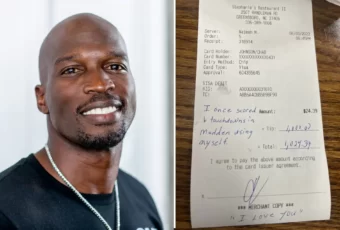The Difference
Baby animals are considered to be far cuter than human babies. Many can agree with this. One primary reason for this is that human babies can’t survive on their own for more than a few seconds. Most animals can, and their clumsy independence is what provides a large portion of their cuteness.
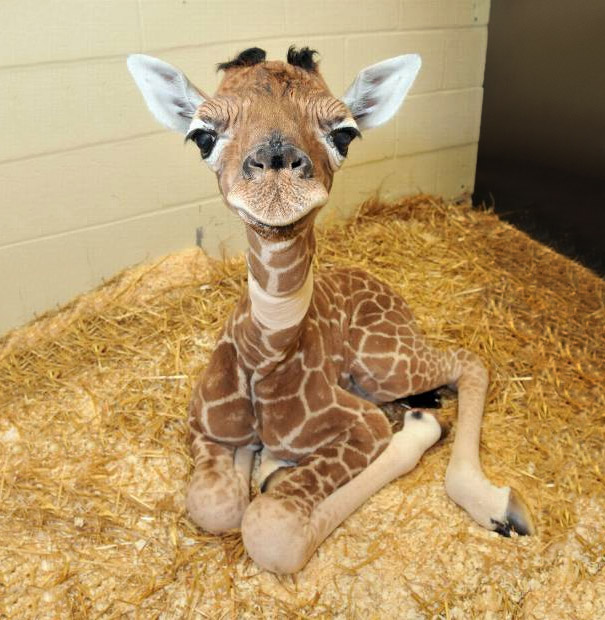
The Difference
Independent
An excellent example of a baby animal’s clumsy independency is that a baby giraffe has the ability to walk after 30 minutes of being born. These baby animals can do many things by themselves, and many are left to fend for themselves after birth.
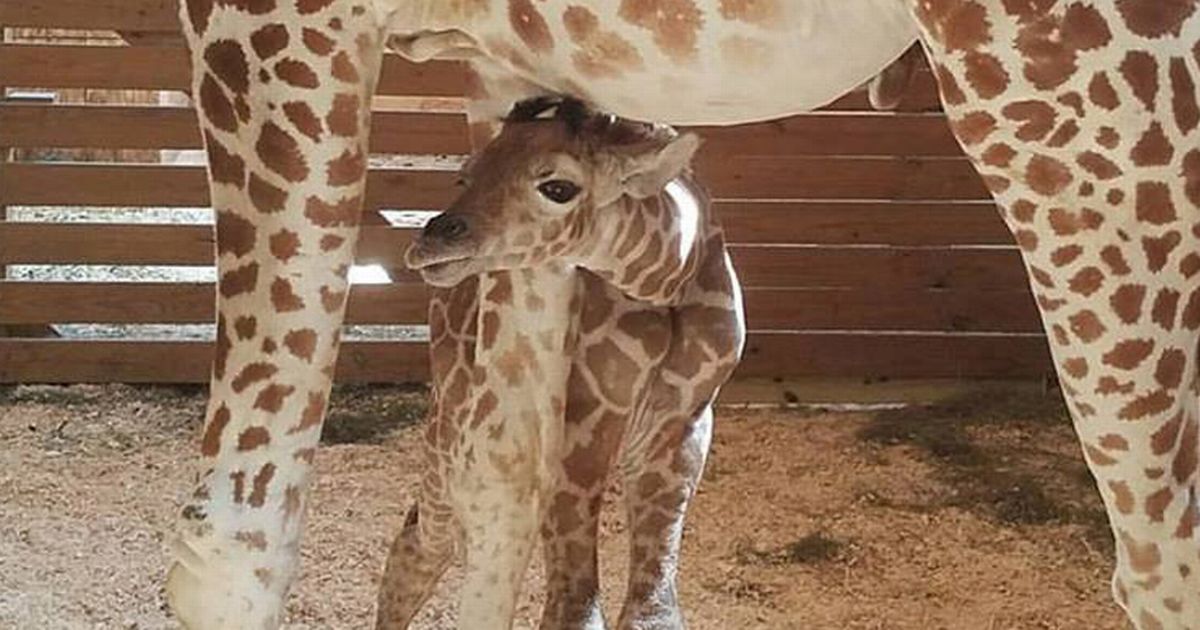
Independent
In Spain
There was one report of a baby zebra located at Valencia Bioparc in Spain who was able to stand up after mere seconds of being born. This baby zebra took his extraordinary first steps while he is dangerously stumbling to the water.
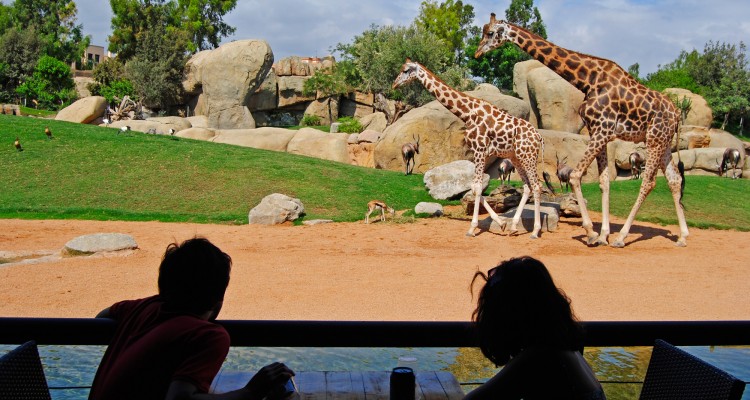
In Spain
About Valencia Bioparc
Valencia Bioparc is a well-known zoo that’s located in Spain. The zoo is 25 acres, and many people know the animals to be extremely happy with the way they are looked after by the zoo staff. This can be due to the zoo management following Zooimersion.
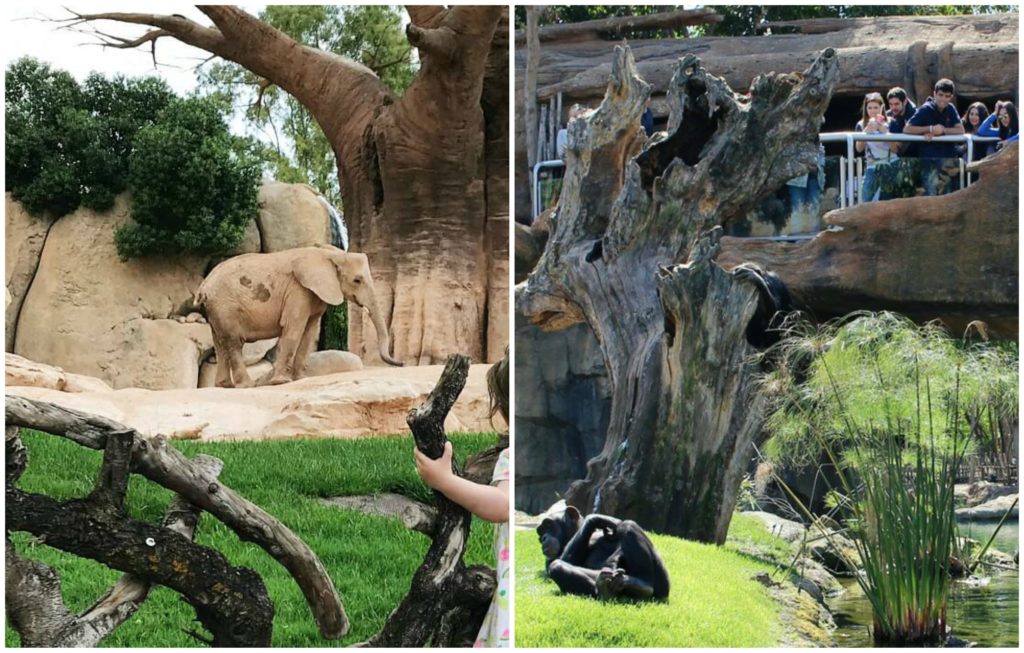
About Valencia Bioparc
Zooimersion
The concept of Zooimersion has influenced the foundation that this particular zoo runs on. This concept is different from the way other zoos around the world are run. The animals aren’t inside cages or behind railings. Instead, rocks, ponds, streams, and rivers are used to separate the animals from the visitors.
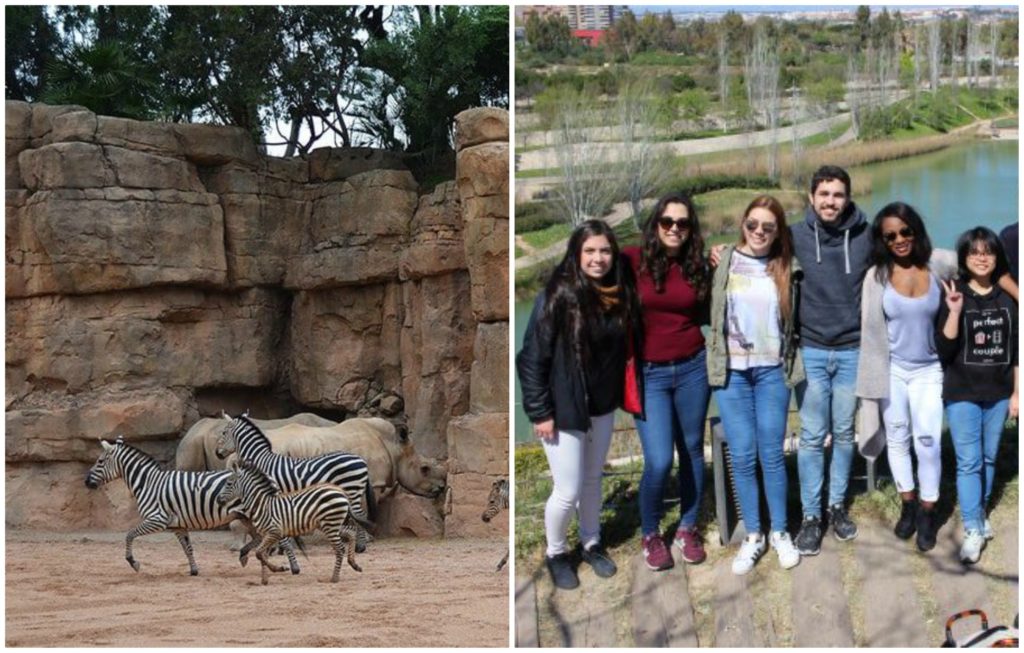
Zooimersion
Co-Existing
Implementing this concept provides visitors with the idea that they are being immersed in the animals’ habitat. Valencia Bioparc also provides that most of the animals co-exist with one another. This may sound dangerous, but predatory animals can actually be easily integrated.
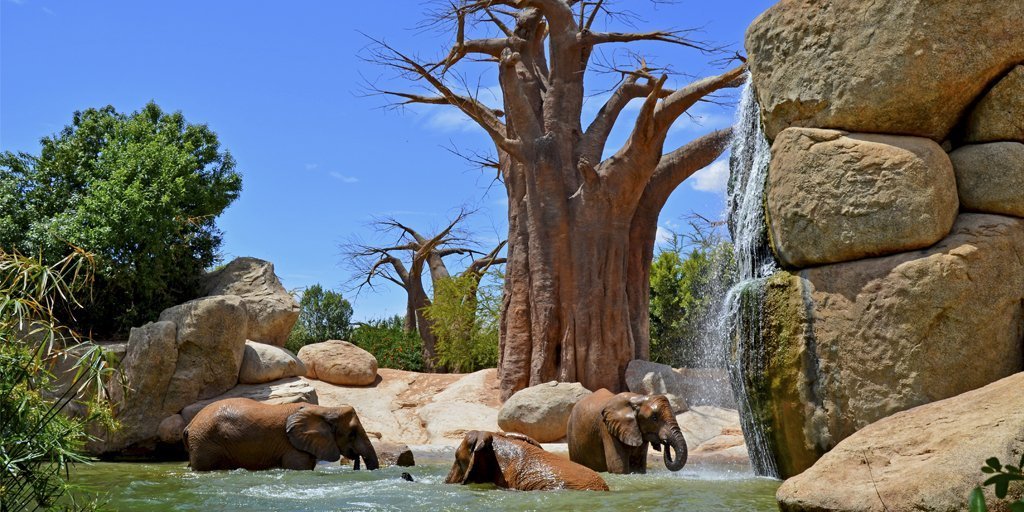
Co-Existing
Separated
The structure of the zoo is very precise. Even though there is a co-existing policy, other species and humans are separated by unnoticeable barriers. The zoo is also located in an area with a beautiful botanical garden near the Túria River.
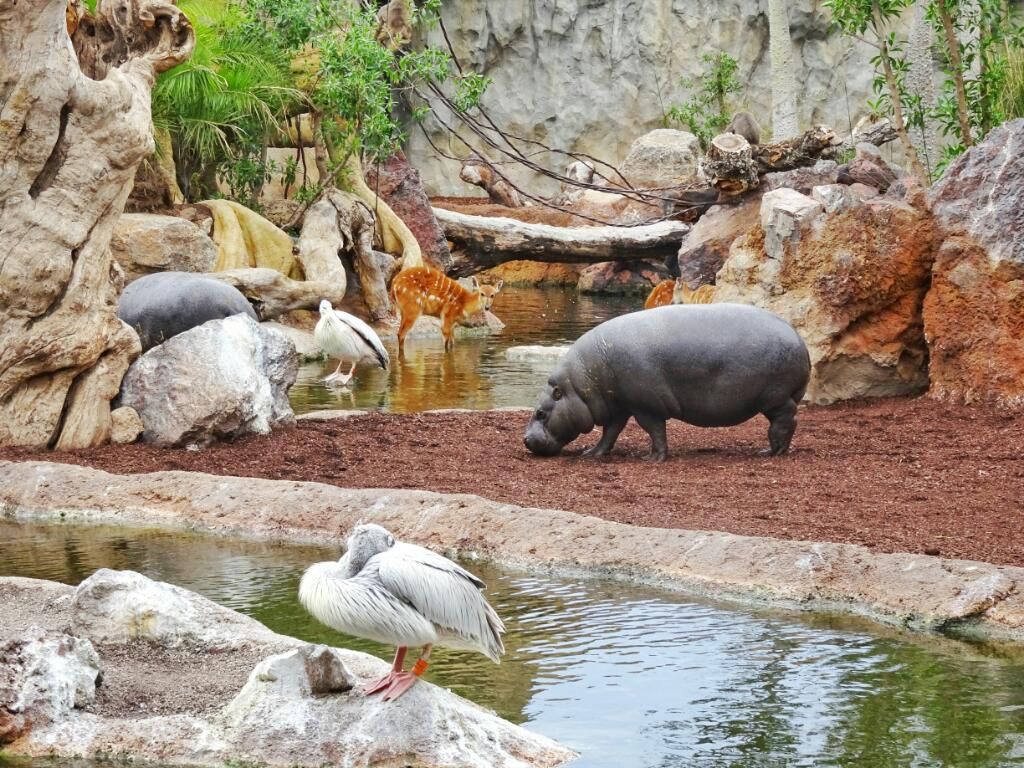
Separated
Arranged Mating
The zoo doesn’t have Match.com or Tinder. Instead, the animals’ partners are all selected for them. One of these arranged mating partners is Zambe and La Niña. La Niña was brought to the Bioparc from the Halle Zoo in Germany in 2007.
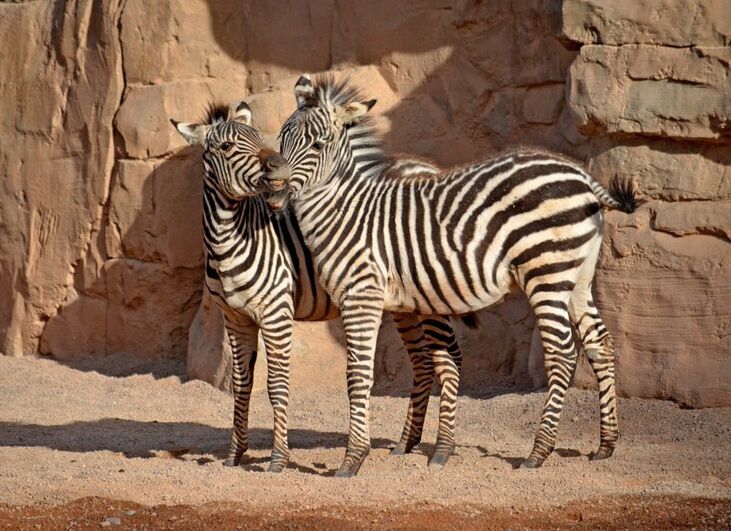
Arranged Mating
The Parents
Zambe arrived at Valencia Bioparc in 2012 after being located at the Safari de Peaugres in France. The pair were said to hit it off immediately. This attraction eventually materialized around 13 months later when La Niña was ready to give birth.
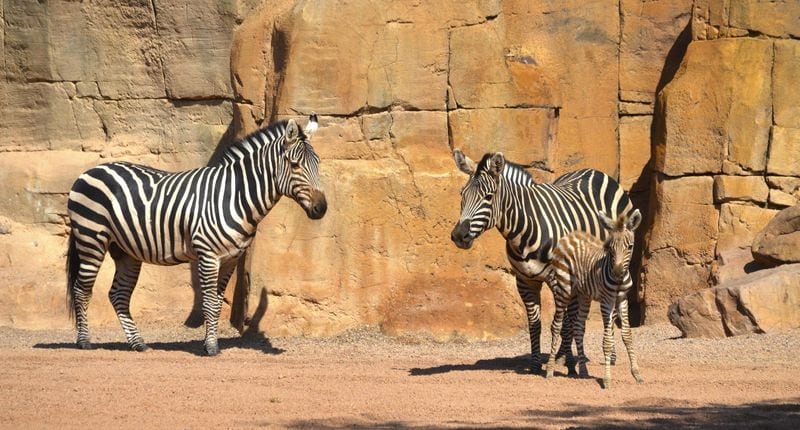
The Parents
The Girl
The mother that was due to give birth to the baby giraffe was named La Niña. The meaning behind this name is The Girl, when translated from Spanish. During the pregnancy, the staff paid close attention to ensure both the baby and mother were healthy.
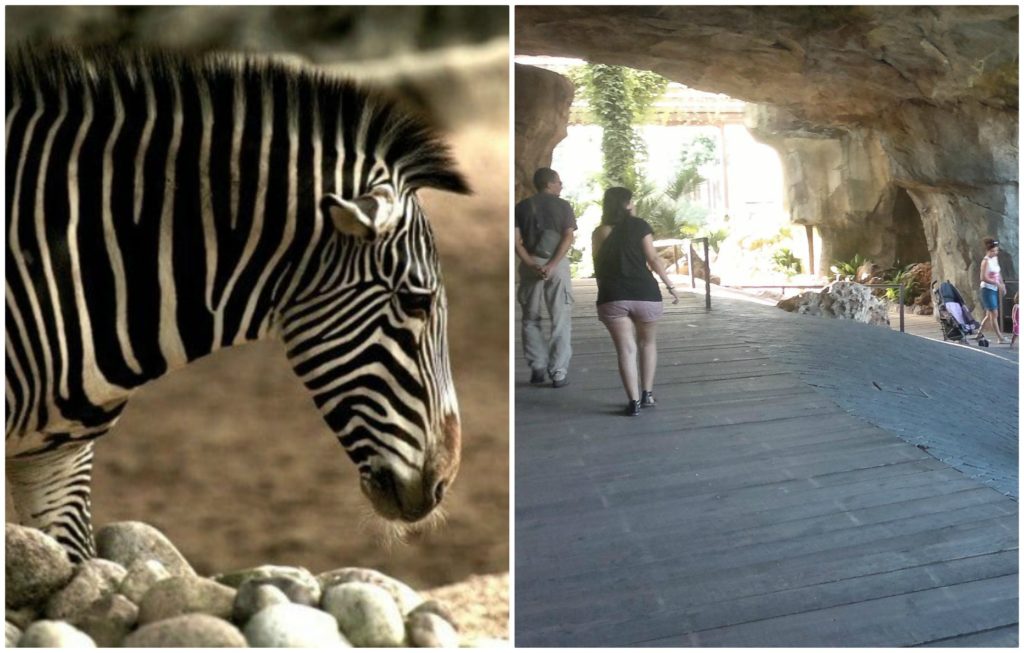
The Girl
The Staff
The role of the staff was to monitor La Niña’s pregnancy and step in if anything went wrong. This is entirely different from how pregnancies are dealt with in the wild. The birthing process took a significant toll on La Niña, and before the baby was out, she fell to the ground in exhaustion.
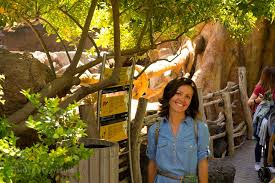
The Staff
Pregnancy
Nine months is considered to be too long for most women. However, can you imagine being a zebra and carrying a baby for an entire year before giving birth? This is precisely what La Niña, along with other female zebras, are required to do.
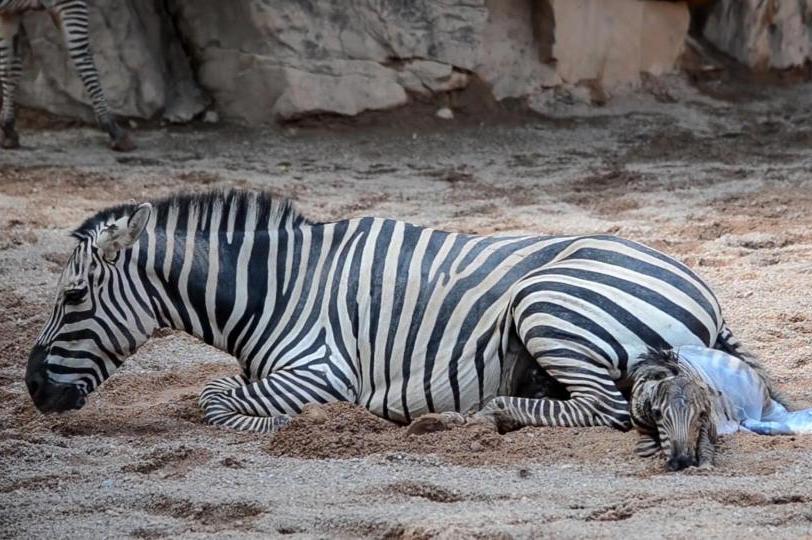
Pregnancy
A Tough Time
A female zebra is known to carry their baby for approximately 12 to 13 months. After this time, the zebra is required to separate from her family and herd and birth the baby on her own, and away from predators.
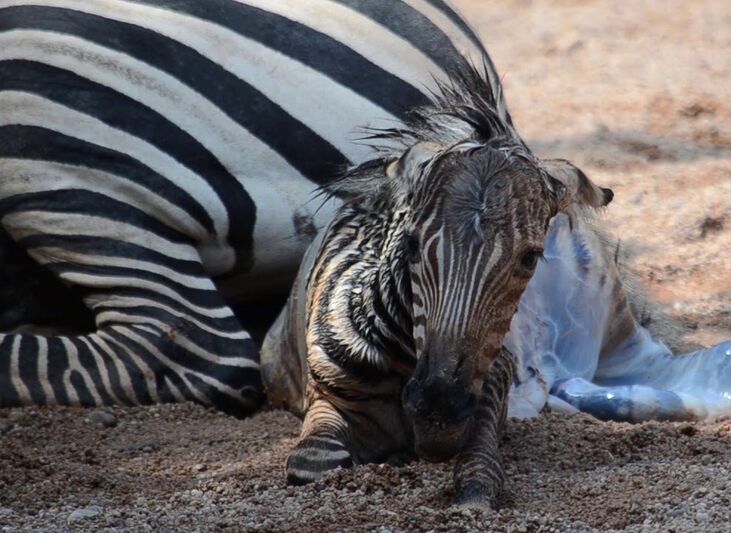
A Tough Time
Comfort
Pregnant zebras are similar to pregnant humans, as they both find comfort in having someone supporting them while they are giving birth. Just having someone there provides the birthing mother with much-needed security, strength, and support. It’s what most mammals want.
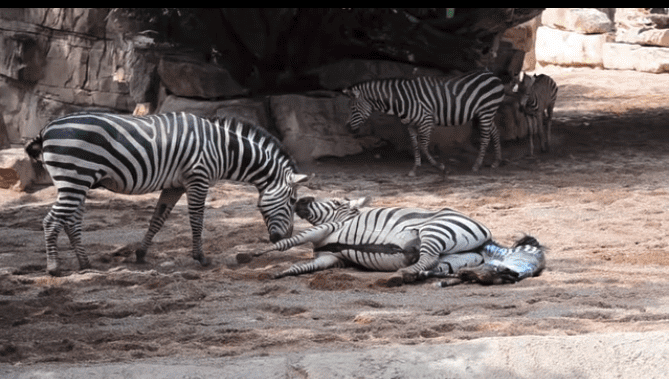
Comfort
La Niña’s Support System
La Niña was considered to be very lucky to have this type of support. The father of the baby, Zambe, was by her side while she was in labor. Zambe was offering help to La Niña in the best way he knew how. The male zebra was seen communicating with her and hovering by her side.
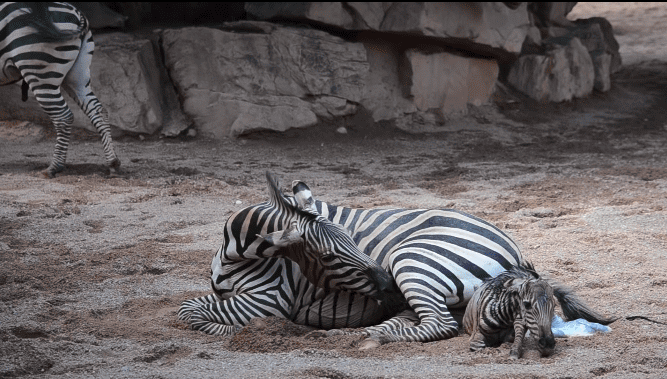
La Niña’s Support System
Welcomed into the World
La Niña was reported to continue pushing even after collapsing to the floor out of utter exhaustion. Finally, La Niña’s hard work paid off, and she gave birth to a baby boy. The young foal seemed ready for action despite being fresh from the womb.
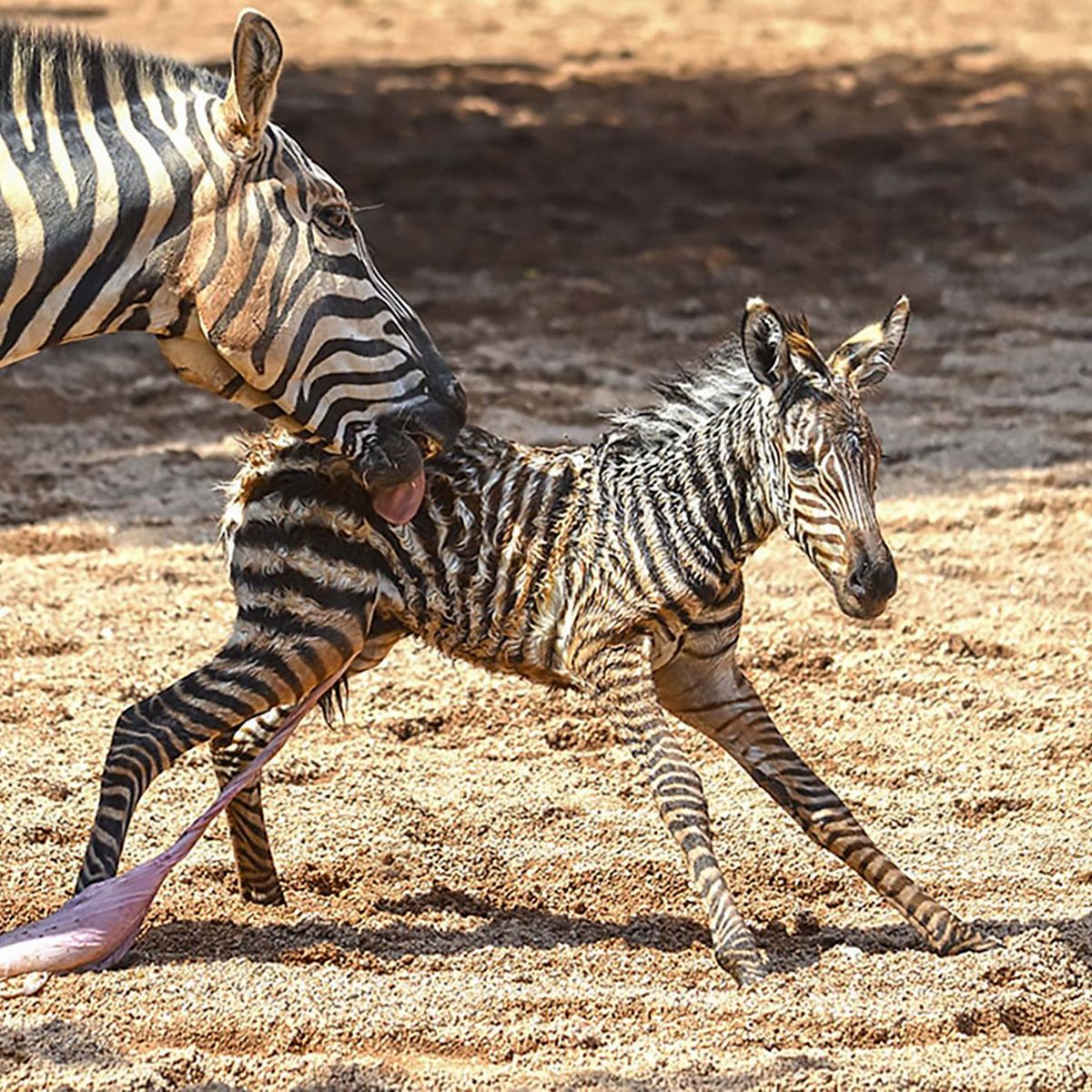
Welcomed Into The World
First Steps
It wasn’t long after the baby foal was brought into the world that he decided to try and walk. This wasn’t a peculiar action, as most foals have the ability to stand after about 20 minutes of being born. The environment didn’t seem to be abnormal.
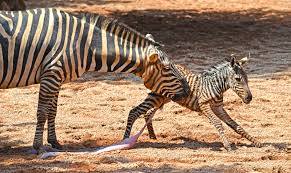
First Steps
An Audience
The staff working at Valencia Bioparc filmed the entire labor process. The employees witnessed as the newborn immersed into the world and was placed onto the sand. The foal lay there for a few moments before slowly stumbling to get onto his feet.
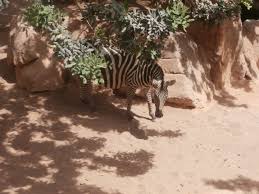
An Audience
Animal Instincts
Even though La Niña was exhausted from what she had just endured, she still managed to put herself together and begin licking the residue off of her baby. A revolutionary tactic for baby zebras standing quickly is to get milk, but this wasn’t the case for this foal.
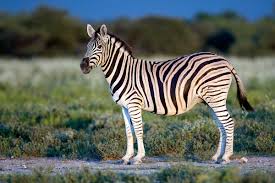
Animal Instincts
Bath Time
The young foal decided that his mother’s cleaning regime was taking too long. That’s when he stood to his feet and waited for his mother to cut off the umbilical cord. After he was detached, he stumbled his way to a watering hole to get clean.
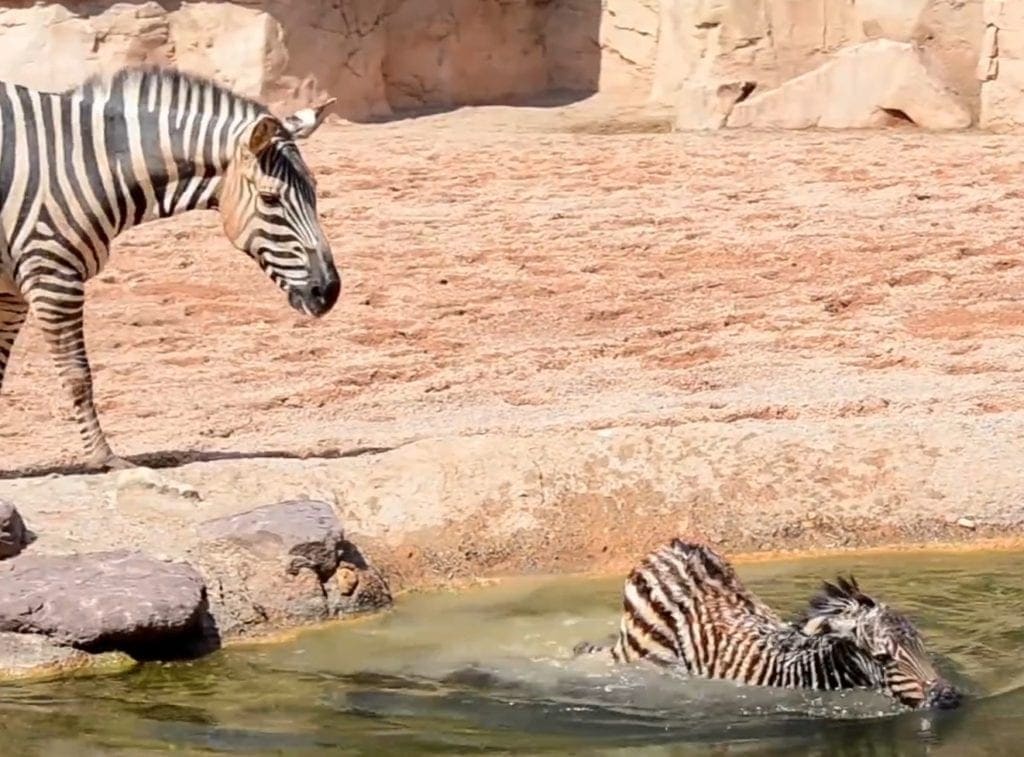
Bath Time
Too Tired
The baby zebra was pretty unsteady on his legs, and he paused for a couple of moments on his way to the water. Despite this, La Niña was too tired to chase after her newborn son. All the staff could do was wait and see what was about to transpire.
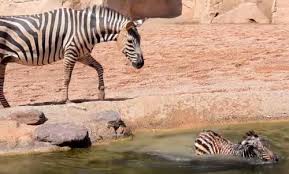
Too Tired
A Terrifying Moment
Newborn zebras possess the ability to walk. However, they are unable to swim. This didn’t stop the ambitious, young zebra from entering the water. Disaster struck after the foal entered the water and the new mother panicked. The video taken by the staff showcases the mother making noises out of desperation.
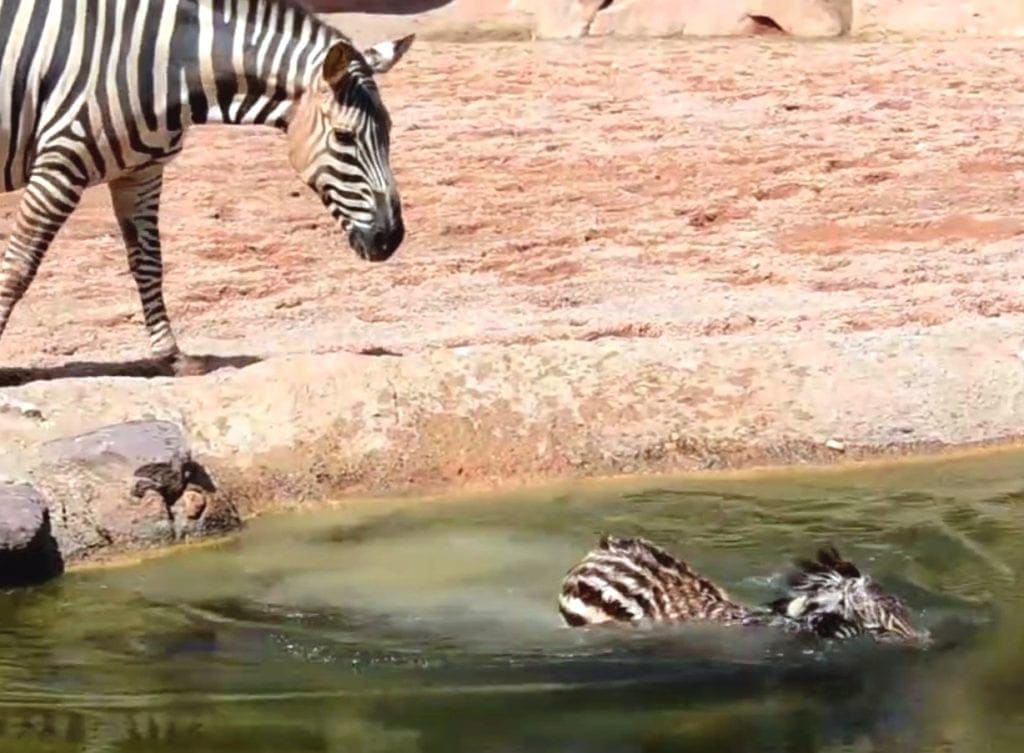
A Terrifying Moment
Nothing She Could Do
La Niña had spent a year growing this foal, and several painful hours in labor. The life that La Niña had grown was potentially about to end in a matter of seconds by the foal entering the water. However, La Niña was too exhausted to move. All she could do was look in absolute horror.
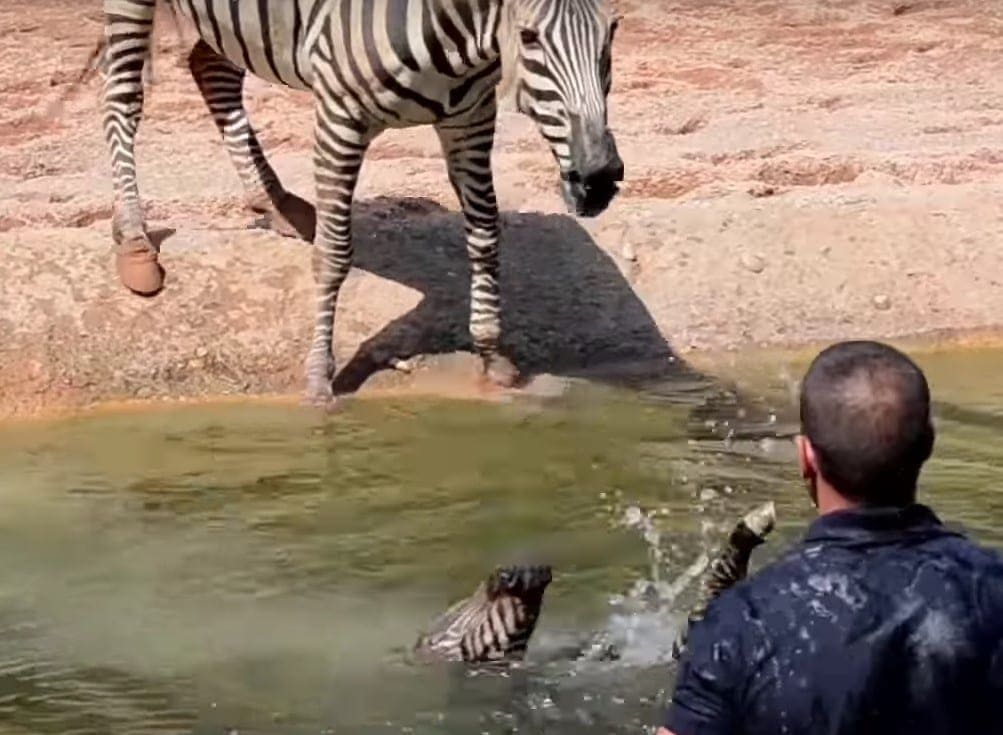
Nothing She Could Do
A Protective Mother
Zebra mothers, like the rest of the animal kingdom, are incredibly protective. It’s an understandable nature to have as these mothers are going to be the primary caregivers to their offspring for a good portion of the baby zebra’s life.
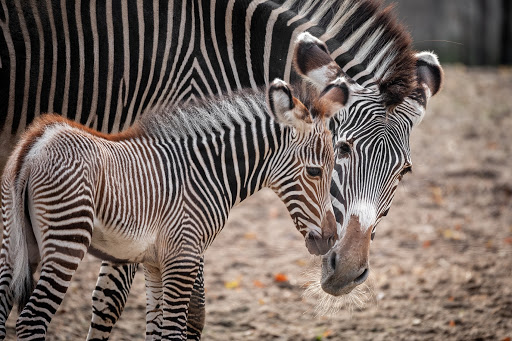
A Protective Mother
Side by Side
During the baby zebra’s first two days on earth, the mother keeps her baby close by her side. The mother even limits the contact this baby shares with other zebras. This is done as a way to familiarize the baby with their mother’s sound, smell, and sight.
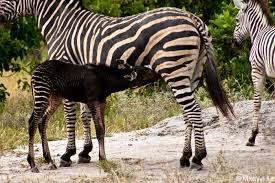
Side By Side
A Toe in the Water
La Niña’s newborn baby was desperate for a bath and made his way to the water to get clean. However, the baby didn’t understand the danger he was getting himself into. The mother didn’t know what to do and was in complete distress.
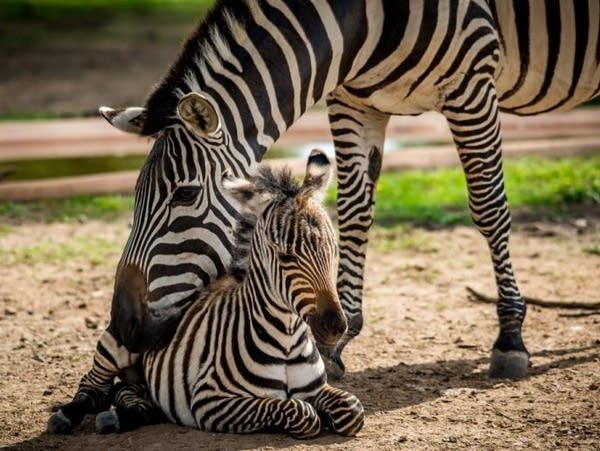
A Toe In The Water
Human Intervention
La Niña was in no way fit to rescue her drowning newborn. Her exhaustion was too great. Luckily this wasn’t the wild, and human intervention was possible. The staff at Valencia Bioparc came to the rescue and jumped into the water to save the drowning baby zebra.
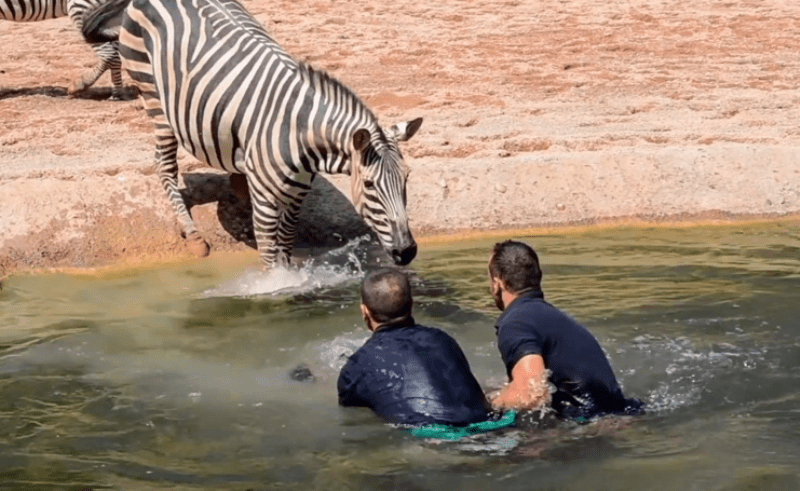
Human Intervention
Bravery
It took an immense amount of bravery for these zookeepers to step in. This is because, although a baby, this zebra weighed approximately 70 pounds at birth. This is the standard weight of any newborn giraffe, but that doesn’t mean it’s easy lifting for the zookeepers.
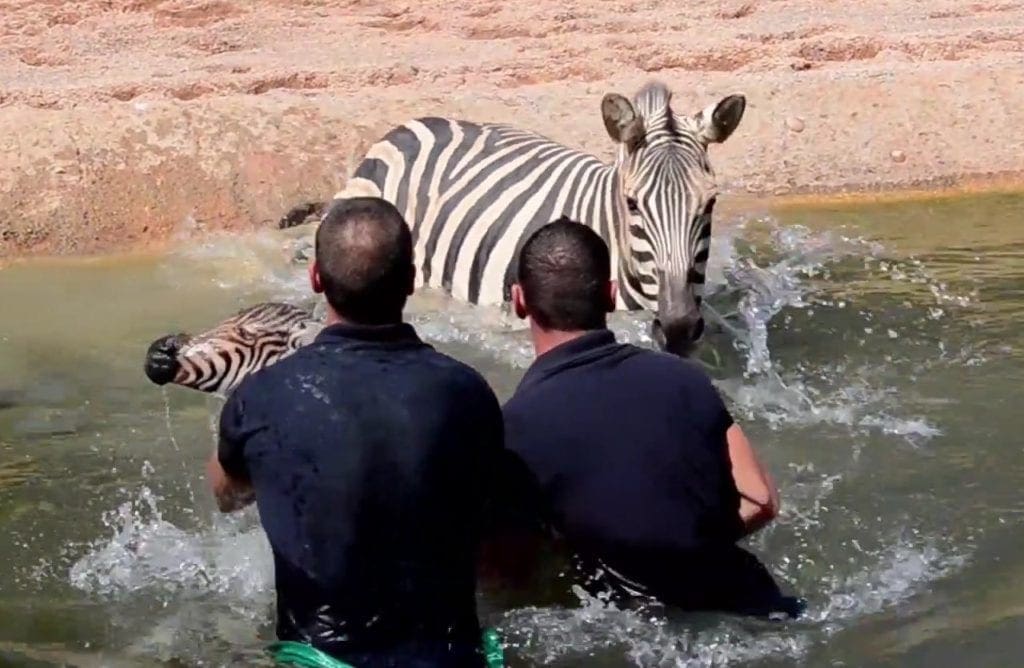
Bravery
A Survival Guide
A crucial thing to take note of is making sure the mother of a newborn zebra doesn’t attack you while you try to save the foal. Thus, the zookeepers knew that they needed to do something fast when they realized that the mother was approaching.
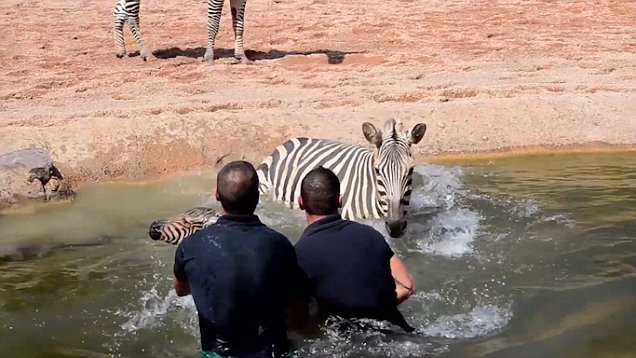
A Survival Guide
Head Above Water
The young zebra quickly began to struggle to keep his head above the water. The zookeepers rushed to catch him. They knew that they didn’t just have to save the baby zebra, but they also needed to keep a watchful eye on the mother.
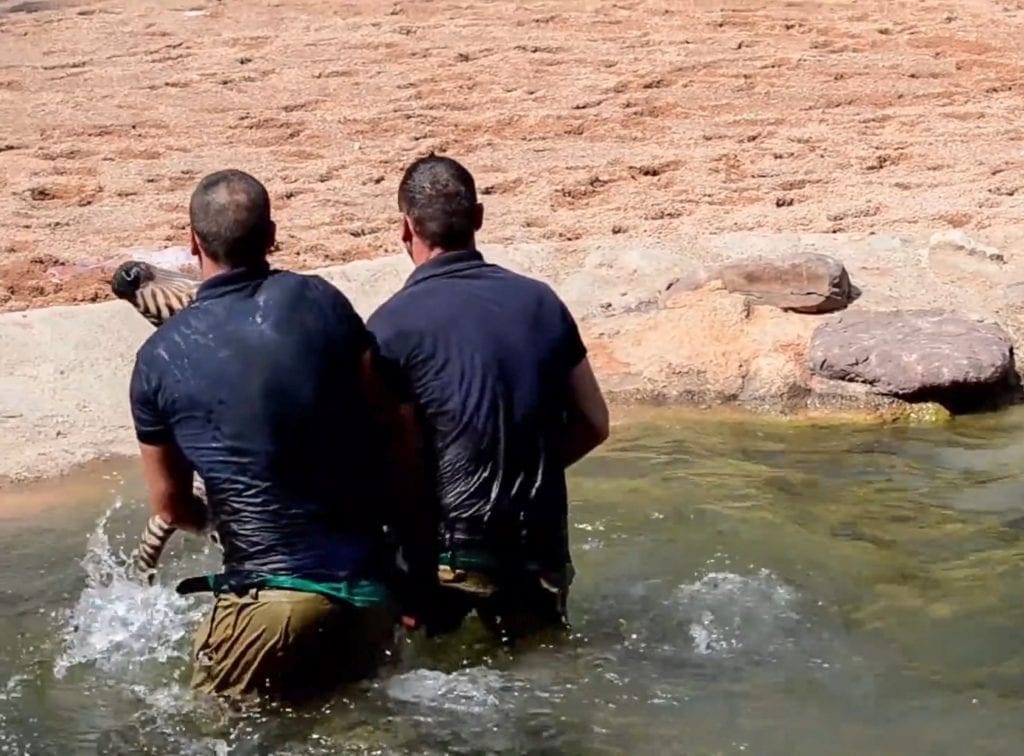
Head Above Water
Her Reaction
All the maternal instincts eventually built up and led to her overpowering the exhaustion she felt. She got the courage and approached the water to save her baby. The mom is quite confused and disorientated after giving birth, which causes a strange reaction.
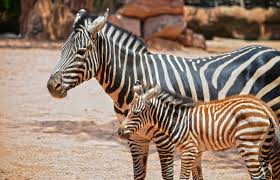
Her Reaction
A Bold Move
The mother got into the water and approached the men with anger. That is until one of the zookeepers made a bold move. After this move was made, everything changed. What was it that he did to switch the mother’s reaction?
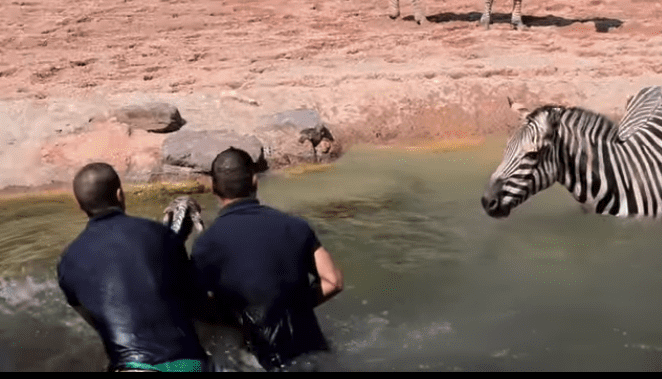
A Bold Move
Coming Closer
The zookeepers quickly carried the 70-pound zebra out of the water and to the shore. All while doing this, they notice that the mother is coming closer and closer. That’s when one zookeeper took the knowledge he received from his training and put it to the test.
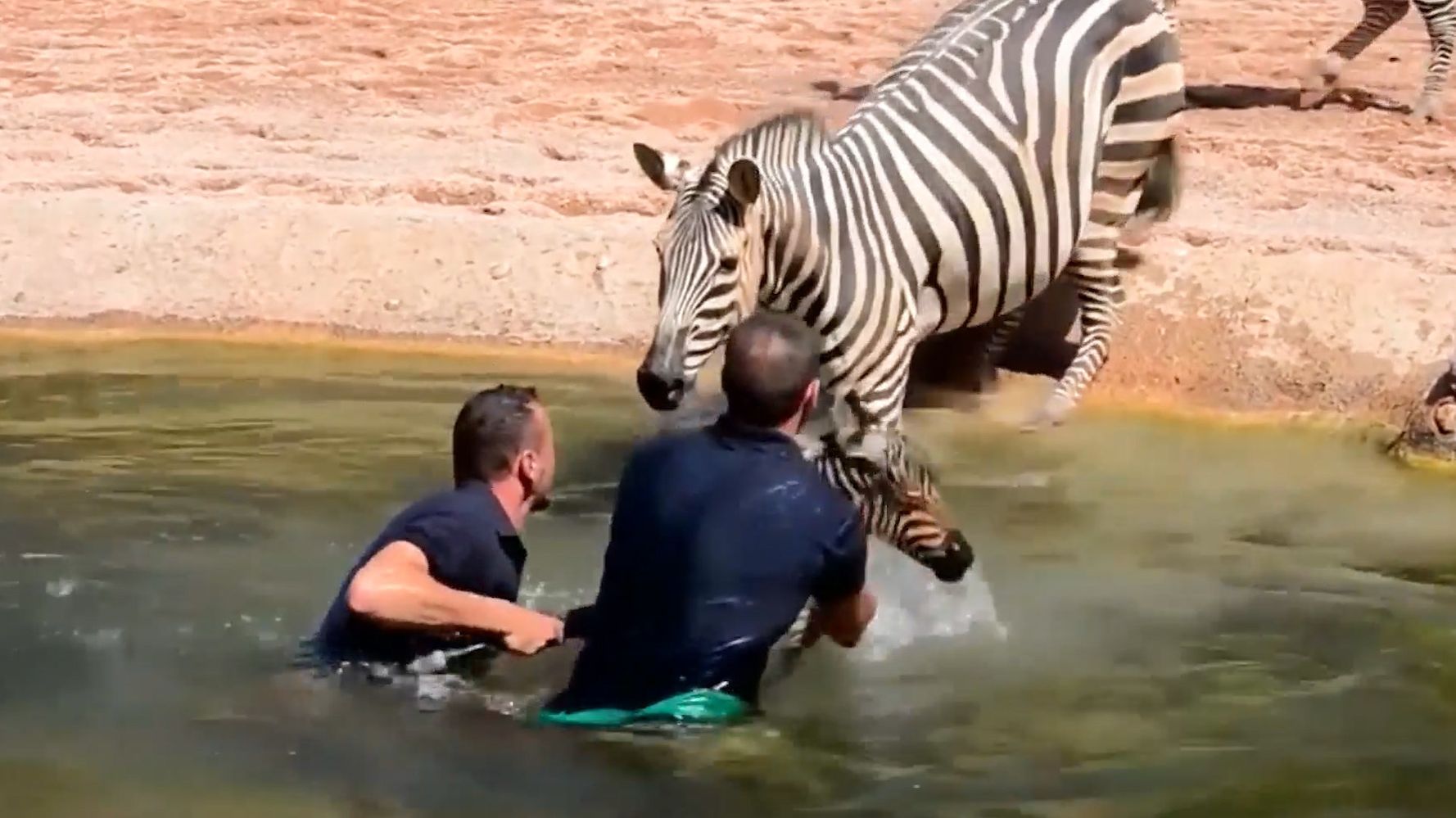
Coming Closer
Backing Off
The one zookeeper realized how close the angry mother was coming and decided that he needed to do something quickly. That’s when he splashed water in the mom’s face as a way to get her to back off – it worked.
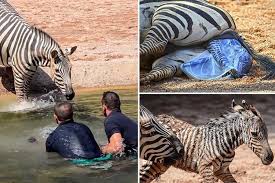
Backing Off
Reunited
The man had successfully removed the drowning baby zebra from the water and brought him back to shore. They then made a speedy retreat to let the mother reunite with her son. La Niña dashed out of the water to the shire, where her son was placed.
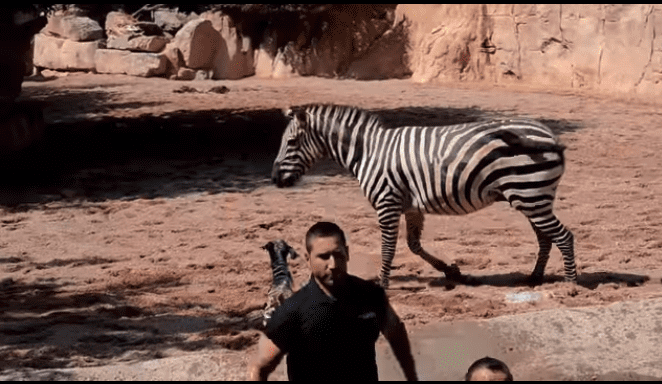
Reunited
All Okay
She approached her son after the two zookeepers were back at the visitors’ area. She began inspecting the newborn to make sure that he was okay. After everything that had just transpired in a matter of minutes, the mother wanted to finally bond with her son.
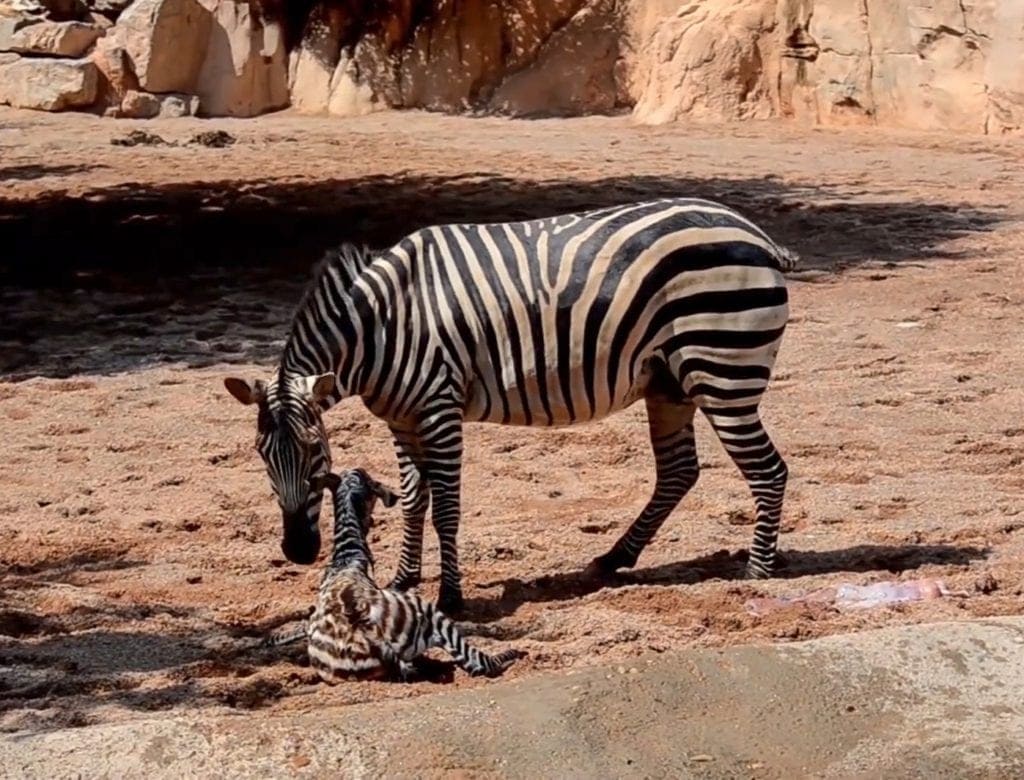
All Okay
Lucky
La Niña and her baby are very lucky, although they may not know it. In any instance like this in the wild, it wouldn’t have ended as well. The foal wouldn’t have stood a chance of survival. No baby zebra would have.
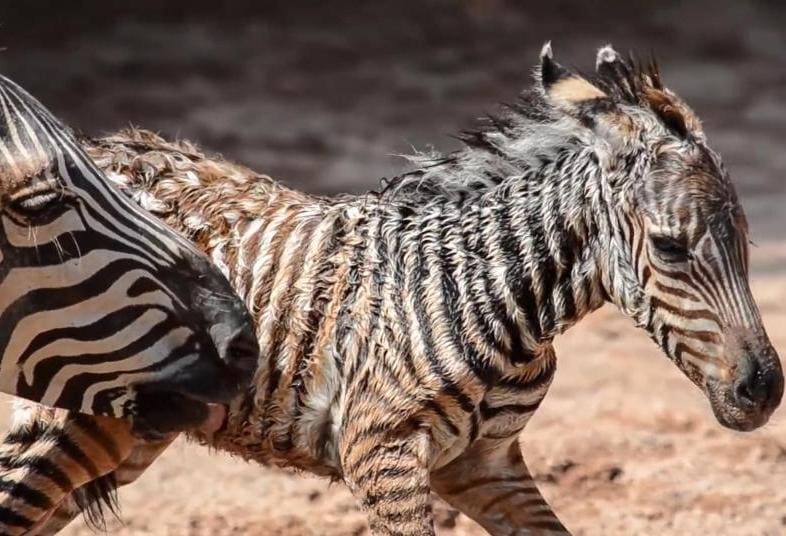
Lucky
In The Wild
This particular zoo provides animals with a safe environment. There aren’t any worries about the survival of the fittest. This is because whatever threatening things that occur within their environment, there is trained staff who can do their best to resolve these issues.
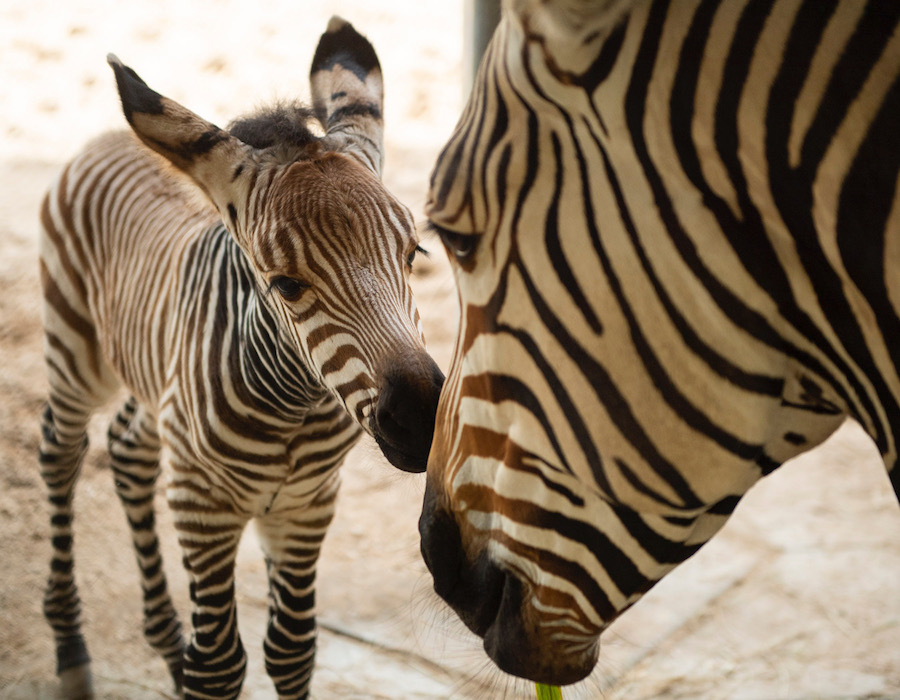
In The Wild
The Audience
This encounter was watched by a large crowd of people. People stood to see the birth and near-death encounter. The audience applauded when the zookeepers successfully removed the baby zebra from the watering hole. What this audience got to witness is nothing short of amazing.

An Audience
The Mother and Son Now
After the life-threatening events, the mother and son successfully bonded and are doing just fine. The baby, who is yet to be named, has settled well and feeds regularly. He has learned very early on that the water is something not to mess with.
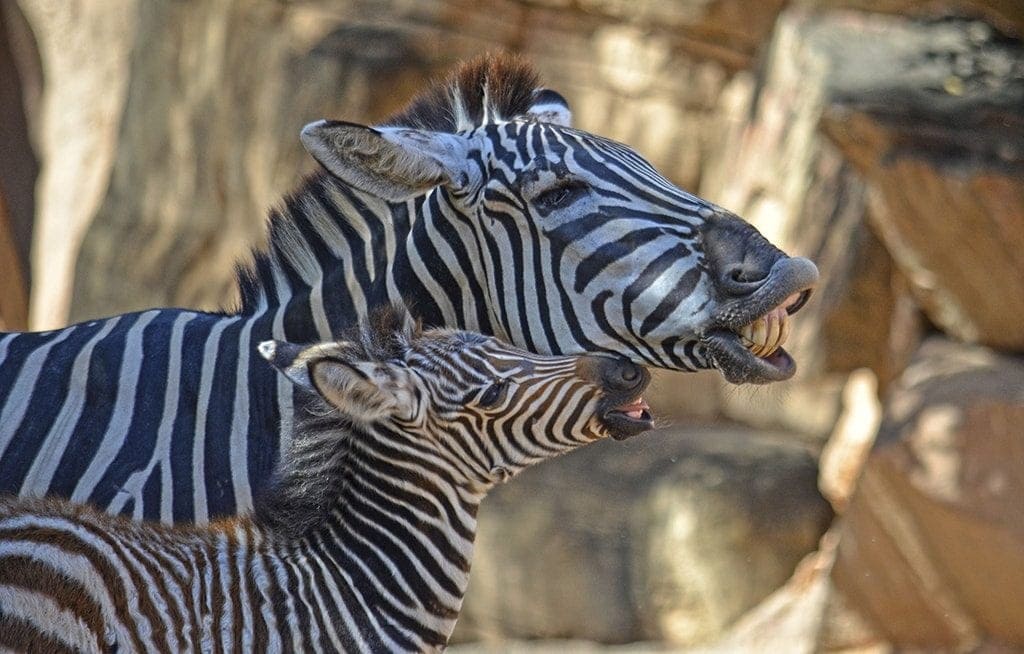
Mother And Son Now
Another Case
Yet another miraculous story involves a baby elephant getting stuck in a ditch. A group of wildlife workers happened to be in the area of Kerala, India when they noticed the poor elephant trapped in a ditch, while its mother watched in horror, unable to help.
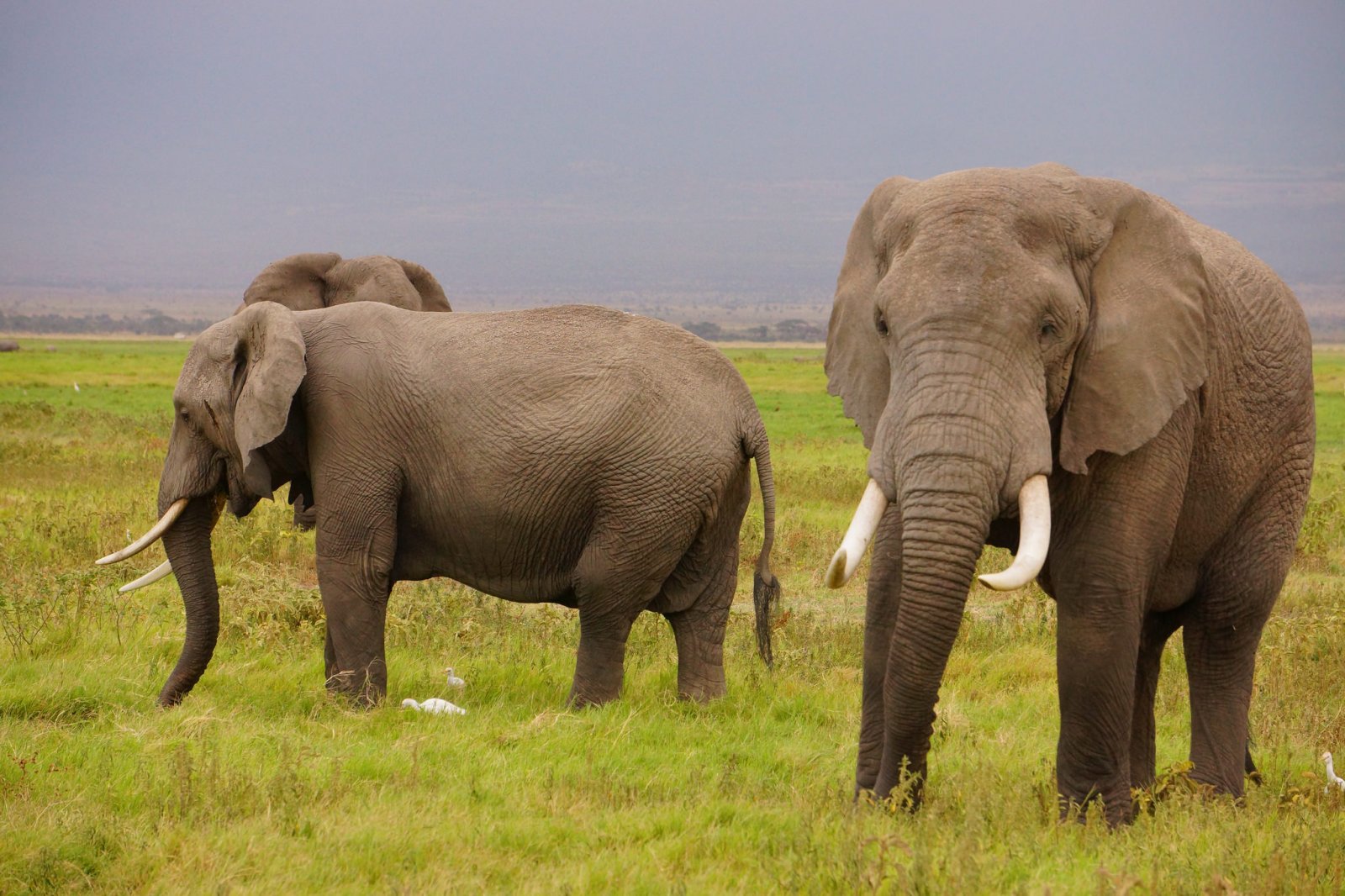
Another Case
Springing To Action
The poor elephant’s cries for help were heard in the village nearby, and shortly after, people rushed over to see what the commotion was. When they saw the poor trapped animal, they knew that had to help.
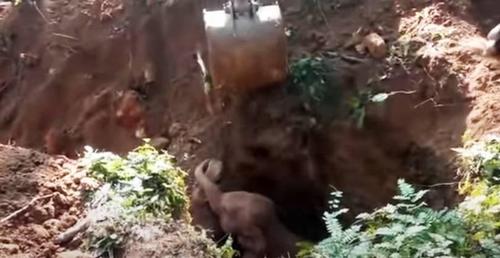
Springing To Action
Large Equipment Was Necessary
A rescue team was called in and they assessed the situation. They knew that they needed large and heavy duty equipment in order to help out, as even baby elephants are quite heavy for human beings to lift up.
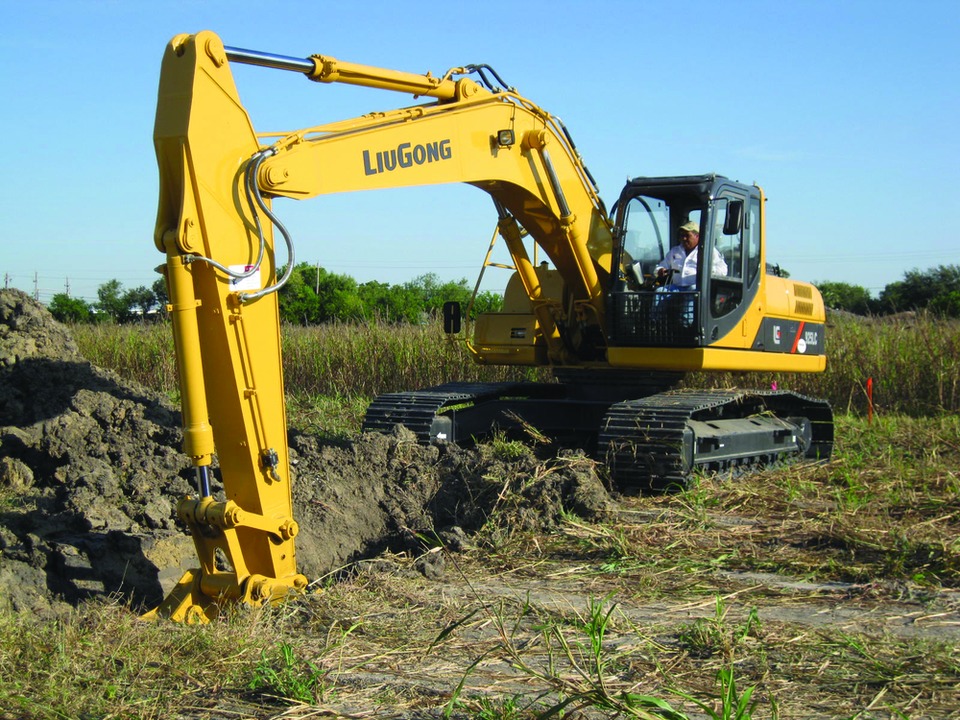
Large Equipment Was Necessary
Reinforcements Came
This was no easy feat to take on, and the rescue team realized that they had to call in reinforcements to help out. A second rescue team arrived with a huge excavator. Finally, they were ready to help the poor baby elephant out of the ditch.
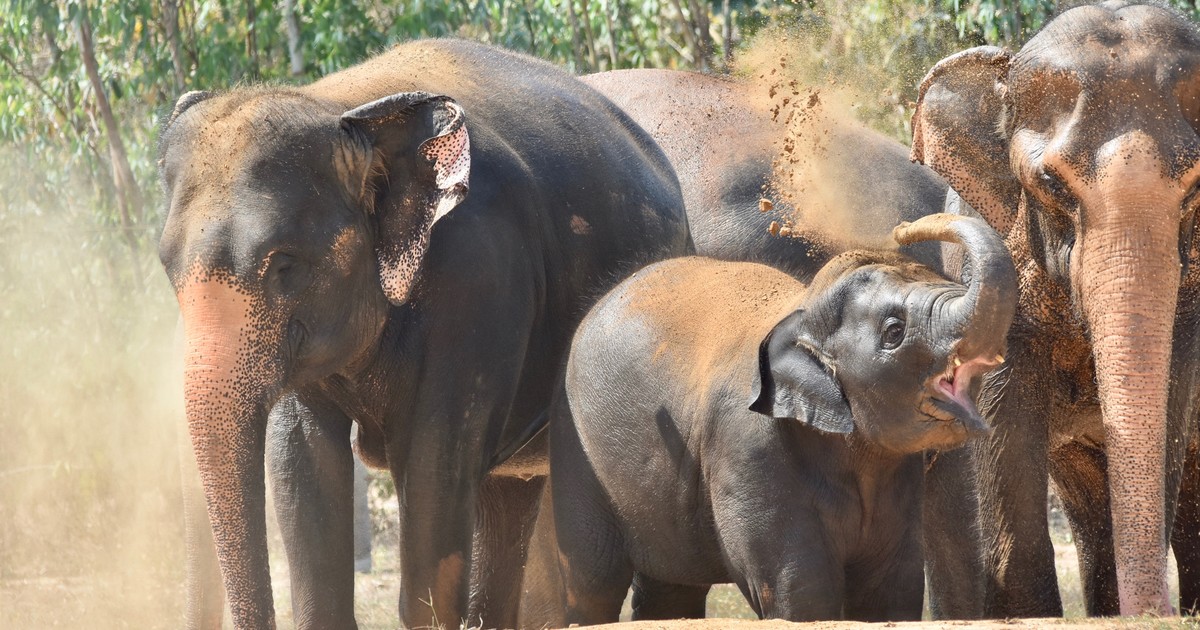
Reinforcements Came
A Risky Operation
Although the full team was now equipped to help the elephant out of the ditch, they had to make sure they did so carefully so that the animal would not be harmed. This was no simple task.
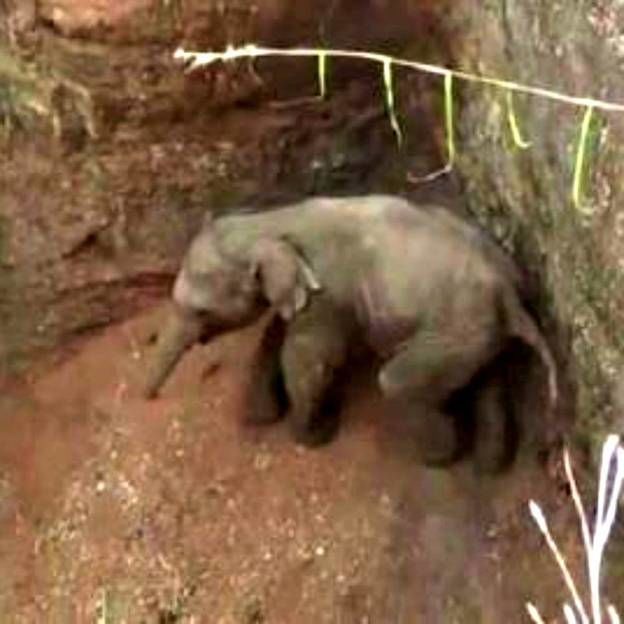
A Risky Operation
They Had To Try
Still, they knew that they had no choice. The poor thing had been trapped for over 24 hours at this point. Both he and the rest of the elephant herd were clearly very distressed. The team knew that they had to make this work.
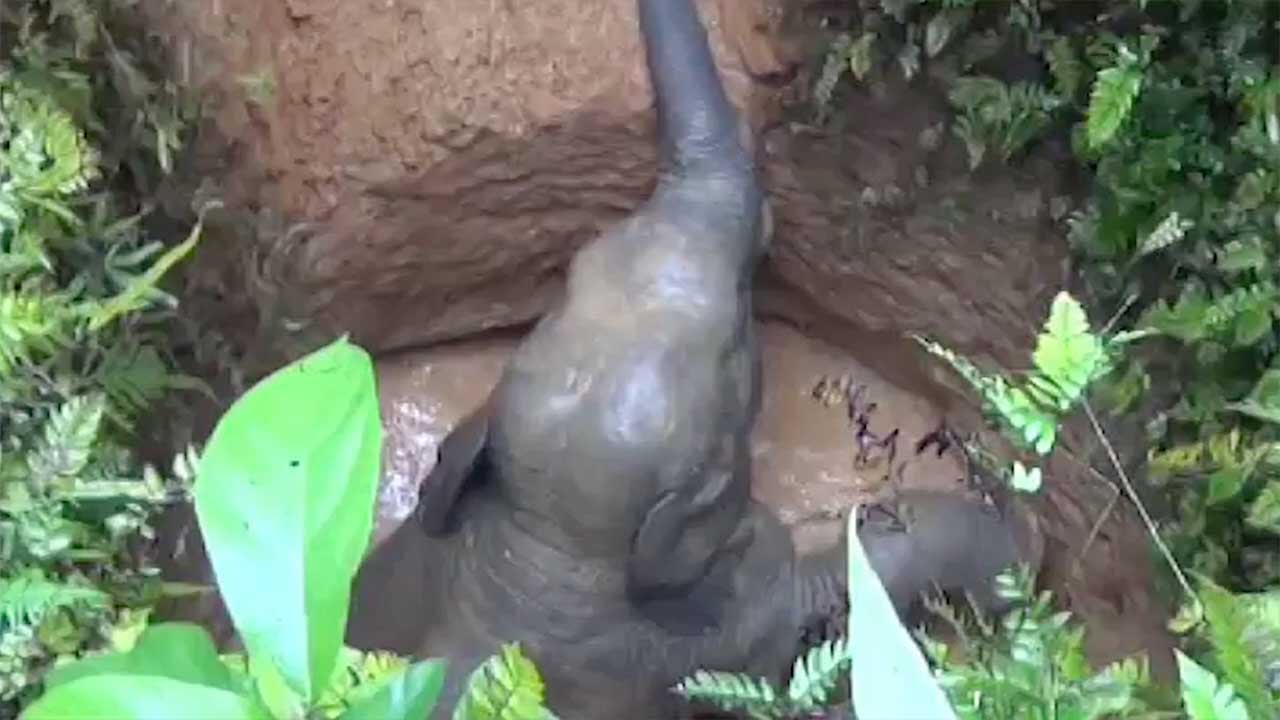
They Had To Try
Safety First
Since their number one priority was saving the elephant without harming in, they began to dig around him. The ditch itself had very limited space, so they needed to create more space to work in and also remove any mud so that it would not fall back into the ditch.
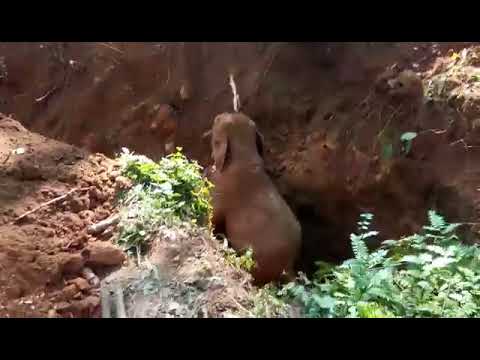
Safety First
A Community Effort
As the men who began to dig worked, other members of the community helped out by bringing food to the rescue team as well as the crowd that had gathered. The elephant herd also looked on, anxiously awaiting the results.
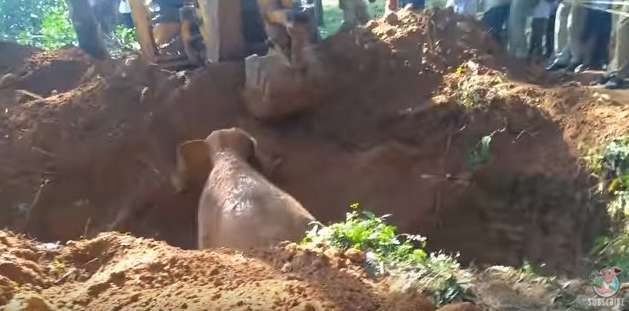
A Community Effort
An Unexpected Setback
As the team used the excavator to dig out mud, all of a sudden a loud banging noise was emitted. The machine stopped working, and no matter what the operator tried, it would not restart. The engine began to smoke due to being overheated.
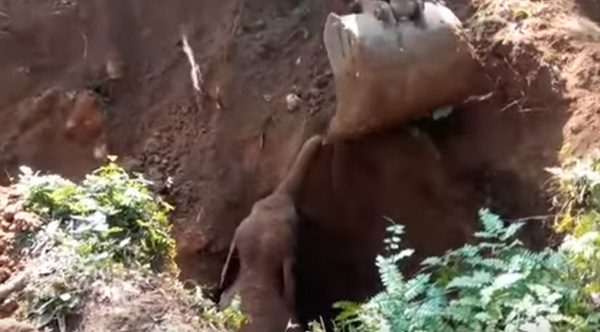
An Unexpected Setback
Rescue On Hold
They could not continue until the engine was repaired. Luckily, some of the locals that were watching the ordeal knew how to fix it. However, the clock was working against them as the baby elephant grew even more distressed from all the commotion.
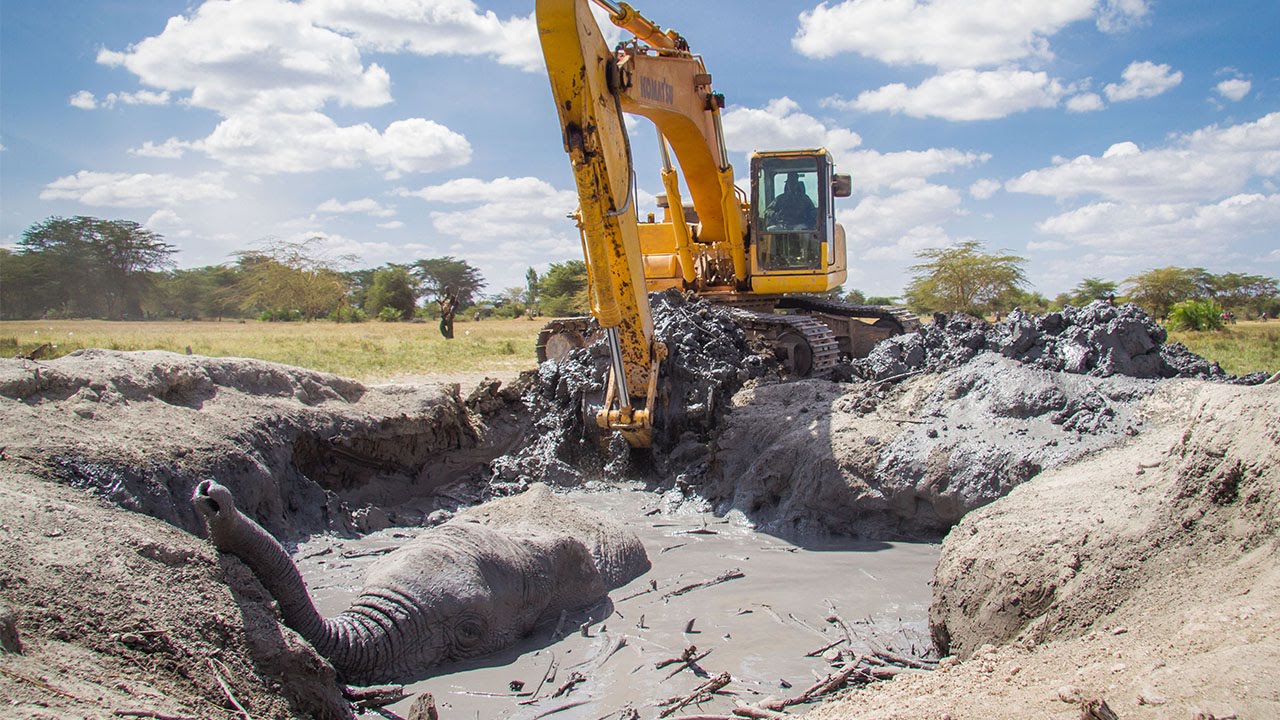
Rescue On Hold
Continuous Digging
Luckily, about an hour later, the engine revved back into life. The team continued digging and soon a clear pathway could be seen, a path that was large enough for the elephant to climb out of the ditch. Could they finish without the engine overheating again?
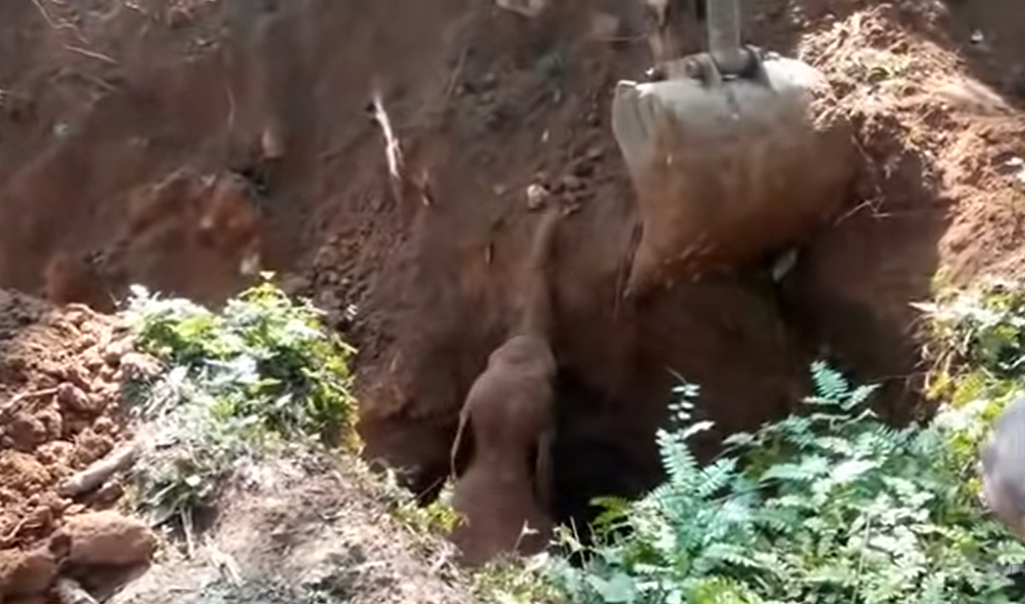
Continuous Digging
A Sigh Of Relief
At first, the baby elephant was too tired to climb out, and the team began to worry. However, his mother quickly sprang to action and run over to help him. The baby was finally able to place his feet on the surface and gain momentum to be lifted out of the ditch.
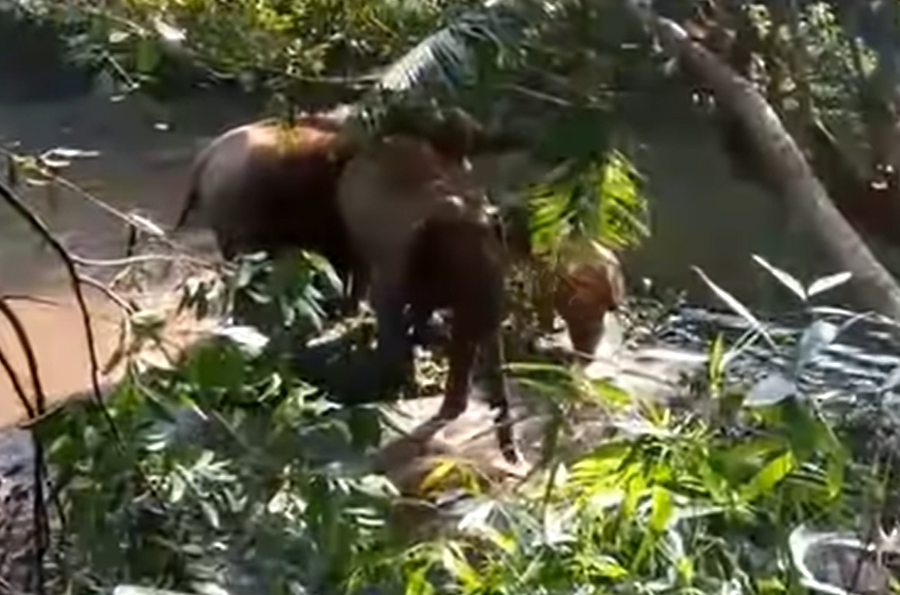
A Sigh Of Relief
A Relieved Mama
The mama elephant was so visibly relieved that her baby was safe after hours upon hours of being trapped. The emotion was so evident that many of the human onlookers began to tear up and cheer, and the elephants stomped their feet and trumpeted for joy.
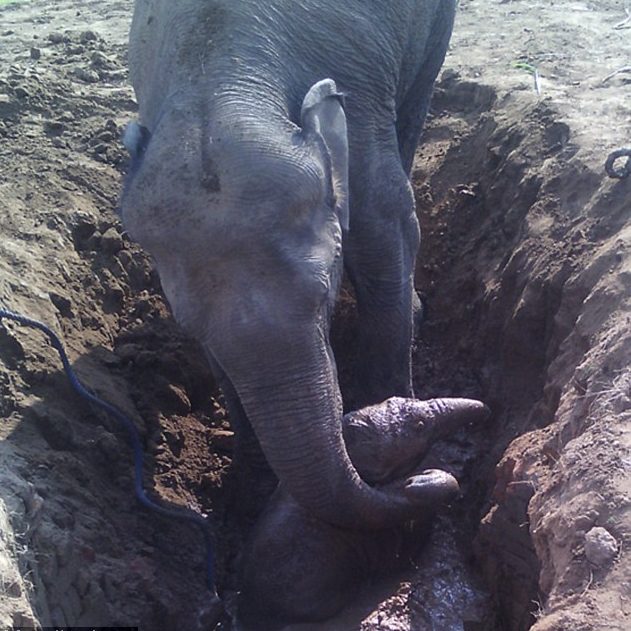
A Relieved Mama
An End To The Ordeal
With the baby safely rescued, the elephant herd circled him happily. They flapped their ears and surrounded him with love. The onlookers noted that it was incredible that the elephants were so loyal to one another and never abandoned the baby or its mother throughout the whole situation.
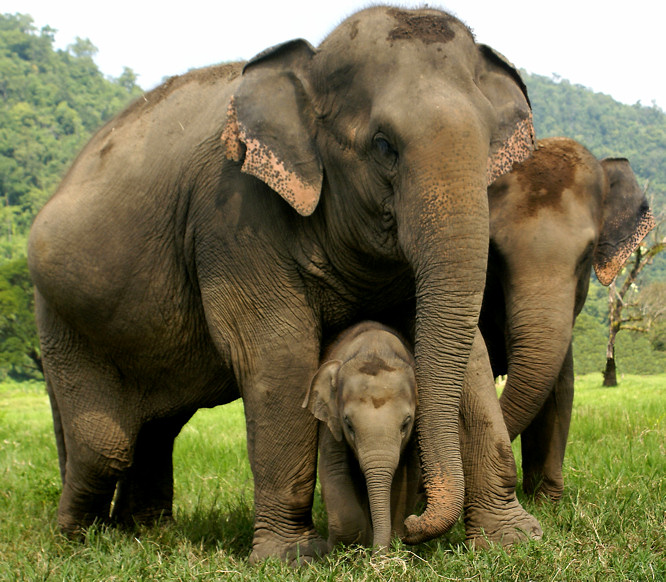
An End To The Ordeal
Time To Replenish
After the celebrations, it was clear that the baby elephant needed to eat and drink, since he had been trapped for over a day and had not had anything to eat or drink. His mother helped him carefully cross the river nearby.
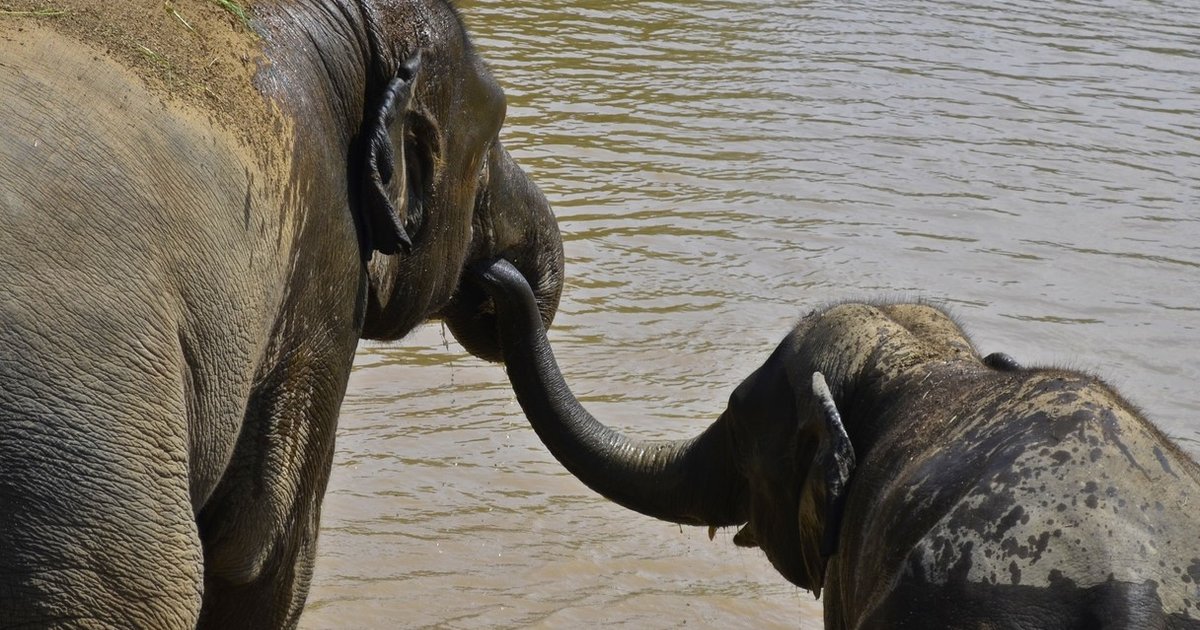
Time To Replenish
Showing Gratitude
As the elephants all crossed the river and headed towards the forest, suddenly they came to a stop. They turned around and looked back at the rescue team and villagers that had helped them out. They began to show their gratitude.
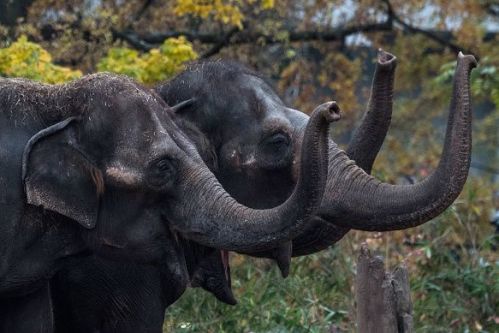
Showing Gratitude
A Salute
The rescuers were stunned by what they saw. The mother elephant lifted her trunk in a salute, as if to indicate her thanks to them for rescuing her baby. Elephants are truly incredible creatures.
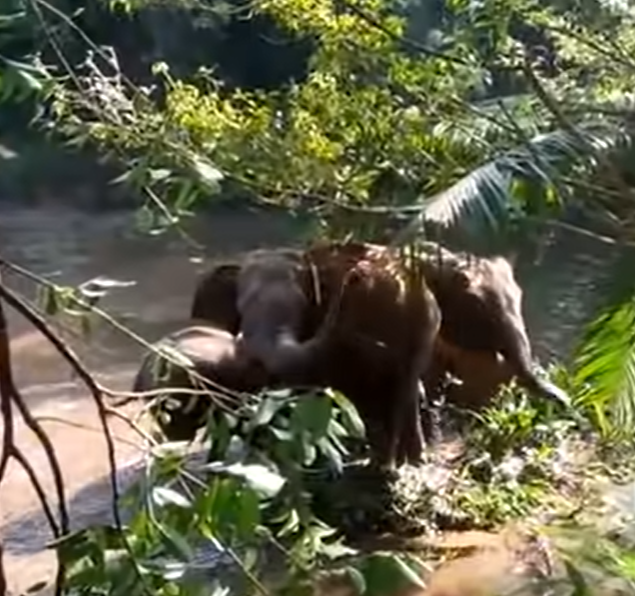
A Salute
Elephants In Distress
Research has shown that elephants are quite empathetic creatures. They will often stop to help other elephants who are in distress or injured and even calling out for help using their trunks.
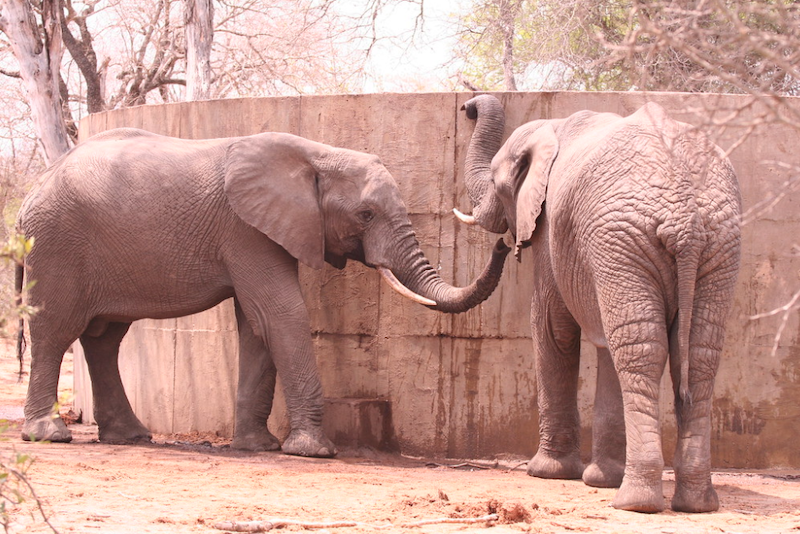
Elephants In Distress
In Danger
When the baby elephant was rescued, the other elephants in the herd made soothing noises in order to help comfort the baby after the distressing ordeal he went through. That was an example of how elephants are empathetic and pack animals.
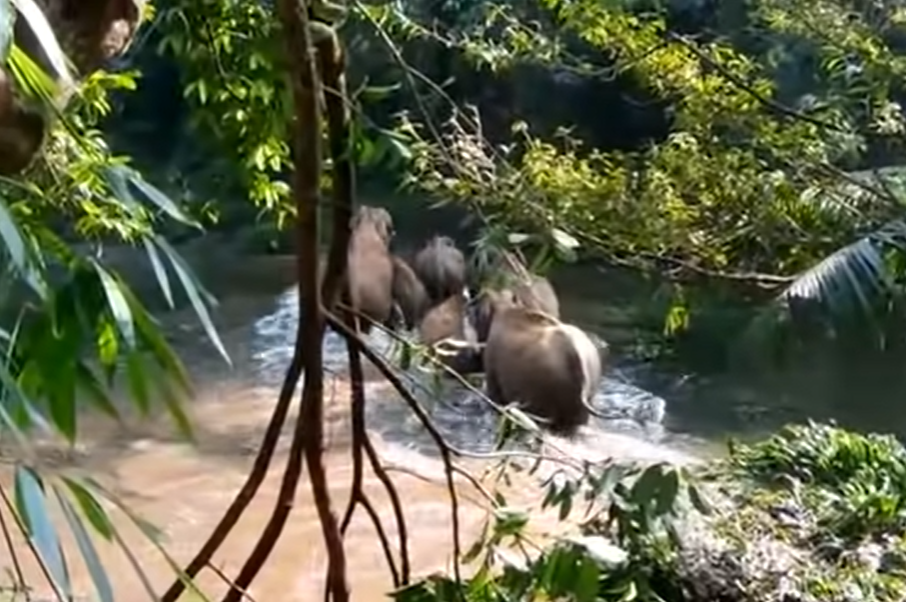
In Danger
A Special Bond
As humans, we tend to forget that we are also members of the animal kingdom. It’s important to remember that other animals show empathy just as we do and place value on family. We must keep in mind our bond to nature and help protect wildlife.
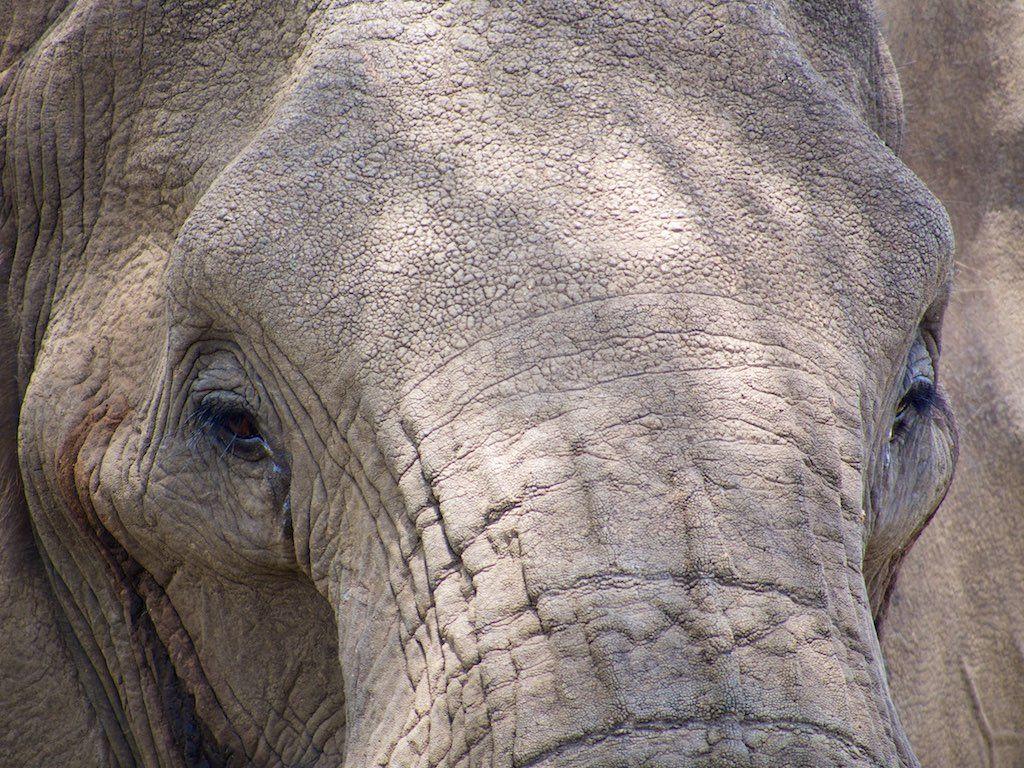
A Special Bond



